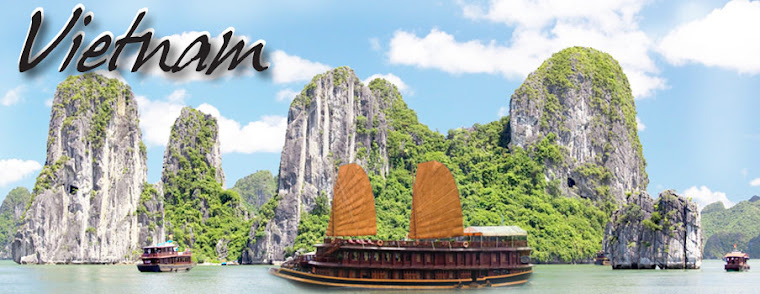
Quan Lạn Island belongs to Bái Tử Long Bay; part of an island range on the outside of the gulf of Bắc Bộ. It has an area of 11 sq. km, and features eight populated hamlets. Quan Lạn Island stretch toward East – West from the foot of Vân Đồn Range to the Gót Mount with many high mountains to the east barring waves and winds, protect the villages. The island is situated on an important navigation route that connects China, Japan, Thailand and Philippines to Vietnam.
Along two sides of the island are tens kilometres of sand beaches. This is the endless resource for glass making which the sea gives to man and it is also the extremely interesting tourism
Since the 11th century, Quan Lạn had been one of the centres of the ancient commercial port of Vân Ðồn, which was animated and prosperous at the time. Today, there are still many vestiges linked to the ancient commercial port.
This also explains why the island, lying deep in the sea, has the large pagodas and archaeological sites seen today. On the island there is the Quan Lạn Communal House built in the 18th century; exceedingly beautiful and almost entirely preserved. Next to it is Quan Lạn Pagoda (Linh Quang Tự), which is dedicated to Buddha and God Liêu Hạnh.
The pagoda also worships the statue of old Hậu, a local person who made lots of contributions to the construction of the pagoda. The statue features a gentle and cheerful old woman, which adds an original character to the pagoda. Beside Quan Lạn Pagoda lies Nghè Quan Lạn (Ðức Ông) Shrine, which is dedicated to Phạm Công Chính, a local people who participated in the historical Vân Ðồn battle against the Yuan invaders. He was later honored as a god. Quan Lạn has many valuable sea products such as octopuses, butterfish, mackerel, holothurian, shrimp, and sái sùng.
Along two sides of the island are tens kilometres of sand beaches. This is the endless resource for glass making which the sea gives to man and it is also the extremely interesting tourism
Since the 11th century, Quan Lạn had been one of the centres of the ancient commercial port of Vân Ðồn, which was animated and prosperous at the time. Today, there are still many vestiges linked to the ancient commercial port.
This also explains why the island, lying deep in the sea, has the large pagodas and archaeological sites seen today. On the island there is the Quan Lạn Communal House built in the 18th century; exceedingly beautiful and almost entirely preserved. Next to it is Quan Lạn Pagoda (Linh Quang Tự), which is dedicated to Buddha and God Liêu Hạnh.
The pagoda also worships the statue of old Hậu, a local person who made lots of contributions to the construction of the pagoda. The statue features a gentle and cheerful old woman, which adds an original character to the pagoda. Beside Quan Lạn Pagoda lies Nghè Quan Lạn (Ðức Ông) Shrine, which is dedicated to Phạm Công Chính, a local people who participated in the historical Vân Ðồn battle against the Yuan invaders. He was later honored as a god. Quan Lạn has many valuable sea products such as octopuses, butterfish, mackerel, holothurian, shrimp, and sái sùng.





































